Axis labels are like captions for categories and values on chart axes. Figure 1, below that shows the default position of axis labels for a column chart. Category names, which show as labels on the horizontal (category) axis have been highlighted in blue. Similarly, values show as labels on the vertical (values) axis, and these are highlighted in red.
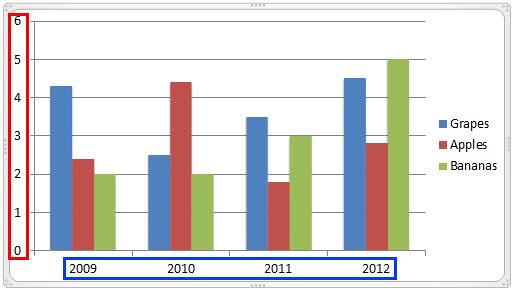
Figure 1: Default axis labels in a column chart
So, where do these labels come from? Category axis labels reflect category names within your data (typically within the built-in Excel sheet). Values on the other hand are determined by PowerPoint based upon the maximum value in your data, and the minimum value is always set to zero. Of course you can change minimum and maximum values if you want.
Value Formats
Values are typically shown as numbers or percentage values. They can also have decimals.
Before you begin, you should have a chart inserted in your PowerPoint slide. We use a column chart for this example.
Follow these steps to learn how you can change your axis labels. Let's start with changing vertical (value) axis labels in PowerPoint 2010 for Windows:
- Select the value axis of the chart on your slide and carefully right-click to access the contextual menu, as shown in Figure 2, below. From the contextual menu, choose Format Axis option (refer to Figure 2 again). If you do not get the Format Axis option in the contextual menu, you may have right-clicked on another chart element. Make sure you then deselect everything in the chart, and then carefully right-click on the value axis.

Figure 2: Format Axis option selected for the value axis - Doing so opens the Format Axis dialog box, as shown in Figure 3, below.
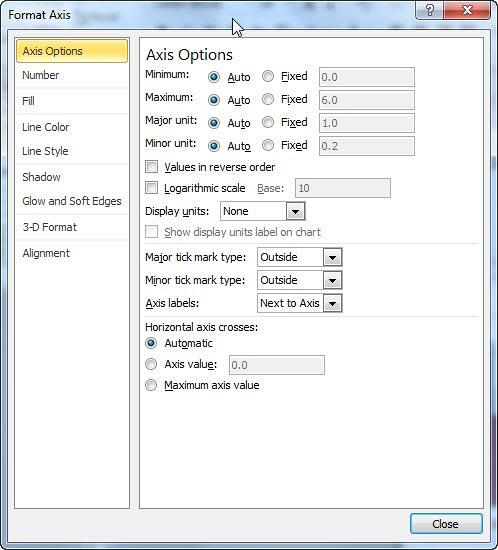
Figure 3: Format Axis dialog box - In Figure 3 above, you can see all of the vertical axis' Minimum, Maximum, Major unit, and Minor unit options are set to default values. We know so because the Auto radio button is selected for all these options, as can be seen in Figure 3, above. If you change the maximum or minimum values, or change the major or minor units, you will see the vertical axis labels reflecting changes you made. Also, the Auto radio button will no longer be selected for changed options, and will be set to the Fixed radio button. To change any of these values, first you need to select the Fixed radio button associated with the option you want to change. Then, enter the required value within the box towards the right of the radio button.
- Look at Figure 4, below where we have set the Maximum value to 10 as shown highlighted in red. You can see a live preview of the vertical axis label automatically reflecting this change, showing the maximum value changed to 10, as shown highlighted in blue within Figure 4. Compare this to the original chart shown in Figure 1, previously on this page.
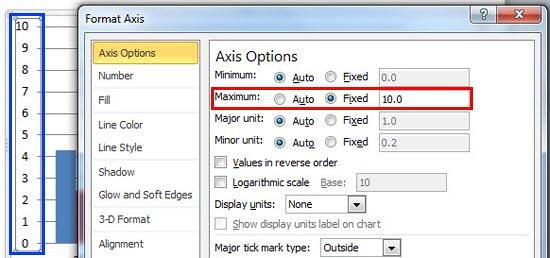
Figure 4: Value axis label reflecting the changed Maximum value - Now, look at Figure 5, below where we have changed the Display units to Hundreds as shown highlighted in red. Notice that the vertical axis label now shows the changed display units as shown highlighted in blue within Figure 5.
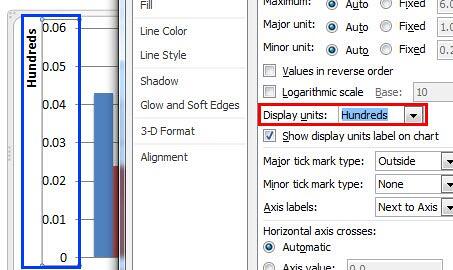
Figure 5: Value axis label reflecting the changed display units - You can also change the value axis label to show as Currency. To do so, select the Number option in the sidebar as shown highlighted in green within Figure 6, below. Thereafter select Currency within the Category list shown highlighted in red within Figure 6. You can choose the Currency symbol you need, and also set the required number of decimal spaces. You can see that the resultant value axis label shown highlighted in blue within Figure 6 is now set to Currency.
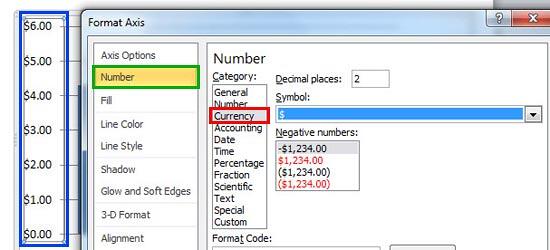
Figure 6: Value axis label changed to Currency - You can similarly change value labels to show Percentages, Fractions, etc.
Now, let us learn how to change category axis labels.
- First select your chart. Then, click the Edit Data button within the Charts Tools Design tab of the Ribbon, as shown highlighted in red within Figure 7, below.

Figure 7: Edit Data button within Data group - Doing so opens an instance of Excel with your chart data. Change category names within the Excel sheet. Look at Figure 8, below where we have changed our category names, as shown highlighted in red.
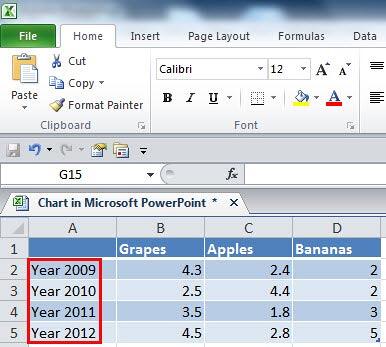
Figure 8: Category names changed within the Excel sheet - Now, exit Excel. Changes you made to category names in Excel will automatically be reflected in the category axis labels of your chart within PowerPoint as shown highlighted in red within Figure 9, below. Compare this with the original chart shown in Figure 1, previously on this page.
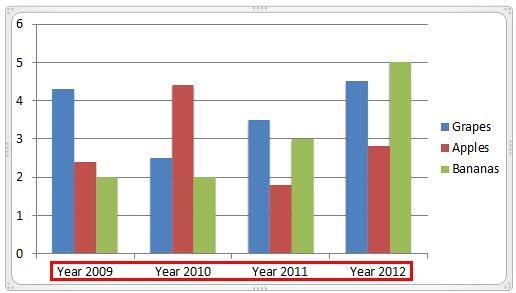
Figure 9: Chart reflecting the changed category names - Save your presentation.











